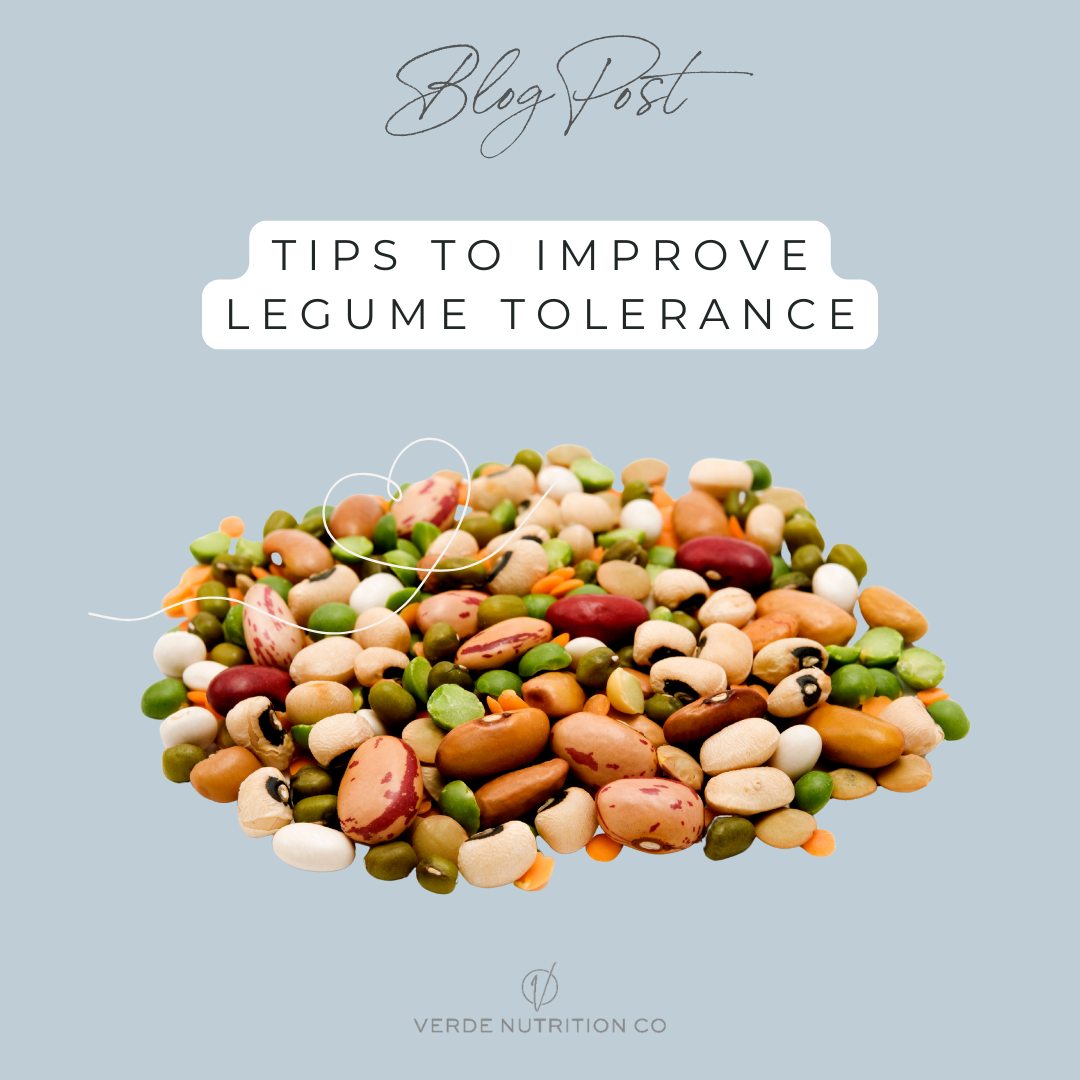Legumes are one of our favourite foods to recommend to clients, but they’re often under-consumed. One common reason for this is gut symptoms after eating them including bloating, gas, excessive wind or diarrhoea. The good news? We have strategies that you can put in place to minimise symptoms and build your tolerance to legumes.
Start low and slow
One of the most common mistakes people make when trying to include legumes in their diet is going from zero to 100. If you’re not used to eating legumes, then suddenly have a can of chickpeas, no doubt you’ll experience some gut discomfort. Start with small portions gradually, such as 1-2 Tbsp every 2-3 days and gradually build up from there. The more we’re exposed to legumes, the more gut bacteria we recruit that digest them, and the better we get at tolerating them. Think of it like training your gut to digest legumes!
Opt for tinned varieties
Tinned legumes are much lower in galacto-oligosaccharides (GOS) compared to dried varieties. GOS are the compounds responsible for the bloating/gas that can come from legumes. Rinsing them well in a sieve/colander until the water runs clear (about 10 seconds) removes 50% of the GOS compounds, so rinsing well is key! If you’re particularly sensitive opt for tinned chickpeas, lentils or kidney beans as they’re particularly low in GOS.
Try chickpea pasta
Pulse pasta such as chickpea pasta is particularly low in GOS compounds, so is a great one to start with if you’re unsure of where to start or dislike legumes. Pair with your favourite pasta dish such as a pesto and roast vegetable pasta or a classic spaghetti bolognese!
Remember some bloating is normal
As mentioned earlier, legumes are an excellent source of GOS, which is a type of prebiotic. Prebiotics are essentially fuel for our gut bacteria, think of them like fertiliser for our gut bugs! When prebiotics are fermented by our gut bacteria, there is naturally going to be some bloating and/or gas as a result. So remember it’s completely normal to experience SOME bloating/gas after consuming legumes, it’s just when it’s excessive and/or painful we want to modify intake to help with tolerance.
For expert dietary support to meet your unique goals and requirements, book your first appointment with one of our wonderful Accredited Practising Dietitians today.
Written by Amanda Smith, Dietitian (APD)

